By Bob Carlson
The 4% rule was generated from attempts to answer the question: How much can I safely withdraw from my retirement portfolio each year without taking a high risk of running out of money? Studies using databases and Monte Carlo computer simulations derived what became a consensus conclusion among financial planners. A retired person or couple can withdraw just over 4% of a nest egg the first year, and then the next year can increase that dollar amount by the inflation rate for the previous year. After that, the dollar amount of withdrawals can be increased for inflation each year.
In the studies, under these terms a standard diversified portfolio (usually 60% stocks and 40% bonds) would last at least 30 years 90% or more of the time. The most difficult times for the strategy were when someone retired early in an especially negative economic period, such as the late 1960s and early 1970s.
Despite the professional consensus for the 4% rule, for the most part people draw down their nest eggs more rapidly. Younger retirees tend to withdraw money at a faster than older people are required to under the IRS's required minimum distributions, according to a recent survey by the Employee Benefit Research Institute. Other surveys show that people tend to believe they safely can withdraw 7% to 10% annually without a problem. Perhaps that is one reason why most people in the U.S. die with only about $10,000 in assets to their names, regardless of their financial condition entering retirement.
I've always warned my readers to be cautious about the 4% rule. For some people, even 4% is too high a withdrawal rate, while for others it is too low.
The rule has many shortcomings. Its measuring period ends at 30 years, which is too short for more and more retirees. You also can change the results by altering the investment mix or strategy. Many people won't have 60% of their retirement portfolios in stocks and so probably should have a withdrawal rate lower than 4%, because they'll earn lower returns. Others have more balanced portfolios or other differences in strategy that justify a higher withdrawal rate because of higher investment returns.
Also, while 90% or higher sounds like a good confidence level, it's really not when you live in those few periods when the strategy fails. During those periods, the failure rate is 100%. Also, the confidence level doesn't answer two key questions: By how many dollars and how many years does the strategy fall short? The extent of failure makes a big difference, because it tells whether you can avoid failure by making small adjustments along the way or need a major overhaul to save your retirement.
More people are raising questions about the 4% rule. In addition to the above criticisms, they're pointing out that we've been in a period of low interest rates and below average investment returns for some time, and that is likely to continue for a while yet. Using historic investment return patterns isn't relevant to today's retirees. I've seen some studies argue a more appropriate safe withdrawal rate today is 1% to 2%.
For most retirees, however, the underlying approach is wrong. The 4% rule and its methodology are good benchmarks or starting points, but they aren't the final answer. People simply don't spend money the way it is modeled in these studies.
Instead, you should have a more dynamic and flexible spending plan. I usually recommend you consider two strategies, or combine them.
One strategy is what I refer to as the Yale Endowment Strategy, because it is based on the distribution strategy of the Yale University Endowment. The university wanted distributions to fluctuate somewhat with investment returns, but it wanted changes to be gradual. The university can't plan its budget if contributions from the endowment are as volatile as the investment markets.
They came up with a two-part formula. One part is very similar to the 4% rule, and it determines 70% of the distribution. The other part determines 30% of the distribution and fluctuates with the size of the endowment fund. So, the second part will rise or decline in line with the net effect of contributions, distributions, and investment returns. You can adapt a version of the Yale University Endowment formula as your retirement spending plan.
The first step is to set the withdrawal percentage for the first year of retirement. Let's say you choose 4% of the portfolio's value. Using the principles of the Yale Endowment, for the first year you spend 4% of the portfolio's starting value.
After the first year, use two separate formulas. The first formula is last year's distribution amount increased by the inflation rate for the last year. Multiply that amount by 70%. The second formula is your initial withdrawal rate multiplied by the fund's value at the end of last year. Multiply that result by 30%.
Add the two results together to get the distribution for the year.
Here's an example. The withdrawal rate is set at 4%, and the initial portfolio value is $600,000. The first year's withdrawal is $24,000. After the first year, the portfolio's value is $604,800 (The initial value minus the first year's spending plus a 5% investment return). Inflation was 2%. Using the first formula, 2% inflation is added to $24,000, then multiplied by 70%. That result is $17,136. Under the second formula, $604,800 is multiplied by 4%, and then by 30%. The result is $7,258. Add the two amounts together and the second year distribution is $24,394.
Under this formula, spending fluctuates with the markets and inflation, but the changes are not as volatile as the markets and inflation are. If the markets experience an extended decline, spending declines gradually. During bull markets, spending increases faster than inflation but not as rapidly as the portfolio increases. That allows you to enjoy some of the excess gains of a bull market, but the spending does not rise enough to absorb all the investment gains. That leaves a cushion against the inevitable market downturns and allows you to have a smoother spending pattern.
The other strategy is based on actual lifetime spending patterns as revealed in Department of Labor surveys. I call this a natural spending cycle.
Spending varies by age. Even after retirement there are several cycles. For most people, annual spending peaks around age 50 and then steadily declines, according to the Department of Labor's Consumer Expenditures survey.
A spending model that accurately reflects the historic spending of Americans divides retirement into three phases. In the first phase, spending is highest (though as indicated, still lower than at age 50) because the retirees are healthiest and most active. They tend to have some pent-up desires for activities and spending. It's not unusual for retirees in the first few years to spend as much or more than they did during their last working years.
In the second phase, they slow down a bit physically and have checked off a lot of items on that Bucket List. So, in this second phase spending is less than in the first phase of retirement. The amount of the reduction varies among retirees, but overall there's a clear reduction. In the third phase, after age 75 or so, spending slows again. The spending reduction after age 75 can be significant, because many people are physically less active or aren't able to do things they used to.
Based on this data, retirees can plan for a three-stage spending cycle.
The first stage can be referred to as the honeymoon period of the first few years. This is when the retiree has pent-up demands and also is relatively young and healthy. After that period, the lifestyle becomes more normal and regular. Spending settles at a level that is lower than during the initial years of retirement. Sometime after age 75, spending is likely to downshift again.
The Department of Labor studies indicate that spending by those over age 75 is 25% or more below that of younger retirees.
This pattern of spending, of course, is very different from that assumed in the 4% safe spending rate model and some other retirement planning models. What the 4% rule is really good for is telling you whether the level of spending you plan for the first year of retirement is reasonable. If your planned nest egg distribution the first year of retirement is well above 4%, review and reconsider your spending plans.
There might be a fourth spending stage in which major medical expenses or long-term care expenses are incurred. Often when this occurs other living expenses decline. The total expenses incurred by the retiree during that period depend on the extent of insurance coverage and the level of care needed. It also depends on whether there is a spouse who needs to remain in the marital home while the other spouse enters a long-term care facility. This is why medical and long-term care expenses are the wild card in retirement planning.
The 4% rule was generated from attempts to answer the question: How much can I safely withdraw from my retirement portfolio each year without taking a high risk of running out of money? Studies using databases and Monte Carlo computer simulations derived what became a consensus conclusion among financial planners. A retired person or couple can withdraw just over 4% of a nest egg the first year, and then the next year can increase that dollar amount by the inflation rate for the previous year. After that, the dollar amount of withdrawals can be increased for inflation each year.
In the studies, under these terms a standard diversified portfolio (usually 60% stocks and 40% bonds) would last at least 30 years 90% or more of the time. The most difficult times for the strategy were when someone retired early in an especially negative economic period, such as the late 1960s and early 1970s.
Despite the professional consensus for the 4% rule, for the most part people draw down their nest eggs more rapidly. Younger retirees tend to withdraw money at a faster than older people are required to under the IRS's required minimum distributions, according to a recent survey by the Employee Benefit Research Institute. Other surveys show that people tend to believe they safely can withdraw 7% to 10% annually without a problem. Perhaps that is one reason why most people in the U.S. die with only about $10,000 in assets to their names, regardless of their financial condition entering retirement.
I've always warned my readers to be cautious about the 4% rule. For some people, even 4% is too high a withdrawal rate, while for others it is too low.
The rule has many shortcomings. Its measuring period ends at 30 years, which is too short for more and more retirees. You also can change the results by altering the investment mix or strategy. Many people won't have 60% of their retirement portfolios in stocks and so probably should have a withdrawal rate lower than 4%, because they'll earn lower returns. Others have more balanced portfolios or other differences in strategy that justify a higher withdrawal rate because of higher investment returns.
Also, while 90% or higher sounds like a good confidence level, it's really not when you live in those few periods when the strategy fails. During those periods, the failure rate is 100%. Also, the confidence level doesn't answer two key questions: By how many dollars and how many years does the strategy fall short? The extent of failure makes a big difference, because it tells whether you can avoid failure by making small adjustments along the way or need a major overhaul to save your retirement.
More people are raising questions about the 4% rule. In addition to the above criticisms, they're pointing out that we've been in a period of low interest rates and below average investment returns for some time, and that is likely to continue for a while yet. Using historic investment return patterns isn't relevant to today's retirees. I've seen some studies argue a more appropriate safe withdrawal rate today is 1% to 2%.
For most retirees, however, the underlying approach is wrong. The 4% rule and its methodology are good benchmarks or starting points, but they aren't the final answer. People simply don't spend money the way it is modeled in these studies.
Instead, you should have a more dynamic and flexible spending plan. I usually recommend you consider two strategies, or combine them.
One strategy is what I refer to as the Yale Endowment Strategy, because it is based on the distribution strategy of the Yale University Endowment. The university wanted distributions to fluctuate somewhat with investment returns, but it wanted changes to be gradual. The university can't plan its budget if contributions from the endowment are as volatile as the investment markets.
They came up with a two-part formula. One part is very similar to the 4% rule, and it determines 70% of the distribution. The other part determines 30% of the distribution and fluctuates with the size of the endowment fund. So, the second part will rise or decline in line with the net effect of contributions, distributions, and investment returns. You can adapt a version of the Yale University Endowment formula as your retirement spending plan.
The first step is to set the withdrawal percentage for the first year of retirement. Let's say you choose 4% of the portfolio's value. Using the principles of the Yale Endowment, for the first year you spend 4% of the portfolio's starting value.
After the first year, use two separate formulas. The first formula is last year's distribution amount increased by the inflation rate for the last year. Multiply that amount by 70%. The second formula is your initial withdrawal rate multiplied by the fund's value at the end of last year. Multiply that result by 30%.
Add the two results together to get the distribution for the year.
Here's an example. The withdrawal rate is set at 4%, and the initial portfolio value is $600,000. The first year's withdrawal is $24,000. After the first year, the portfolio's value is $604,800 (The initial value minus the first year's spending plus a 5% investment return). Inflation was 2%. Using the first formula, 2% inflation is added to $24,000, then multiplied by 70%. That result is $17,136. Under the second formula, $604,800 is multiplied by 4%, and then by 30%. The result is $7,258. Add the two amounts together and the second year distribution is $24,394.
Under this formula, spending fluctuates with the markets and inflation, but the changes are not as volatile as the markets and inflation are. If the markets experience an extended decline, spending declines gradually. During bull markets, spending increases faster than inflation but not as rapidly as the portfolio increases. That allows you to enjoy some of the excess gains of a bull market, but the spending does not rise enough to absorb all the investment gains. That leaves a cushion against the inevitable market downturns and allows you to have a smoother spending pattern.
The other strategy is based on actual lifetime spending patterns as revealed in Department of Labor surveys. I call this a natural spending cycle.
Spending varies by age. Even after retirement there are several cycles. For most people, annual spending peaks around age 50 and then steadily declines, according to the Department of Labor's Consumer Expenditures survey.
A spending model that accurately reflects the historic spending of Americans divides retirement into three phases. In the first phase, spending is highest (though as indicated, still lower than at age 50) because the retirees are healthiest and most active. They tend to have some pent-up desires for activities and spending. It's not unusual for retirees in the first few years to spend as much or more than they did during their last working years.
In the second phase, they slow down a bit physically and have checked off a lot of items on that Bucket List. So, in this second phase spending is less than in the first phase of retirement. The amount of the reduction varies among retirees, but overall there's a clear reduction. In the third phase, after age 75 or so, spending slows again. The spending reduction after age 75 can be significant, because many people are physically less active or aren't able to do things they used to.
Based on this data, retirees can plan for a three-stage spending cycle.
The first stage can be referred to as the honeymoon period of the first few years. This is when the retiree has pent-up demands and also is relatively young and healthy. After that period, the lifestyle becomes more normal and regular. Spending settles at a level that is lower than during the initial years of retirement. Sometime after age 75, spending is likely to downshift again.
The Department of Labor studies indicate that spending by those over age 75 is 25% or more below that of younger retirees.
This pattern of spending, of course, is very different from that assumed in the 4% safe spending rate model and some other retirement planning models. What the 4% rule is really good for is telling you whether the level of spending you plan for the first year of retirement is reasonable. If your planned nest egg distribution the first year of retirement is well above 4%, review and reconsider your spending plans.
There might be a fourth spending stage in which major medical expenses or long-term care expenses are incurred. Often when this occurs other living expenses decline. The total expenses incurred by the retiree during that period depend on the extent of insurance coverage and the level of care needed. It also depends on whether there is a spouse who needs to remain in the marital home while the other spouse enters a long-term care facility. This is why medical and long-term care expenses are the wild card in retirement planning.


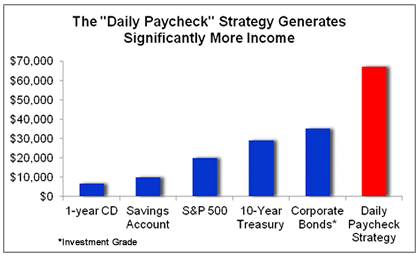
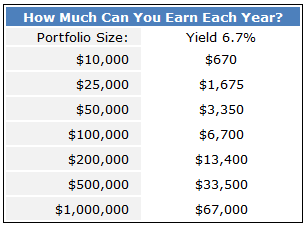
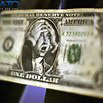
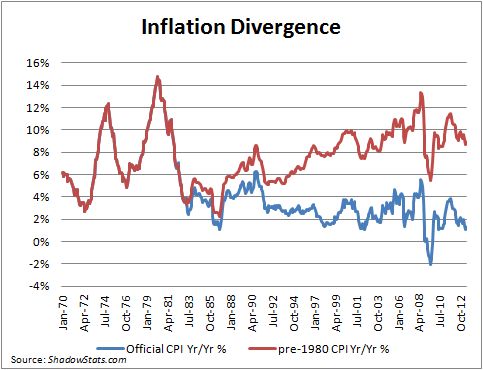

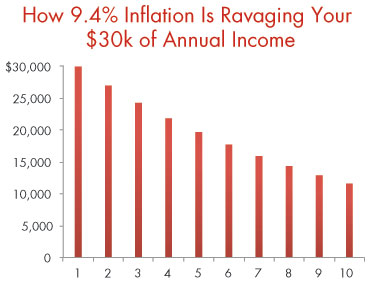
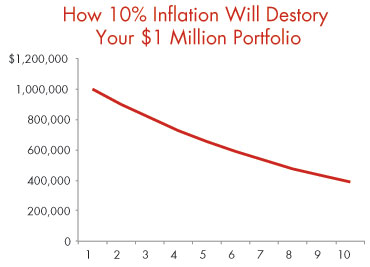
 RSS Feed
RSS Feed
